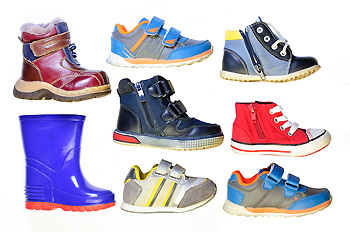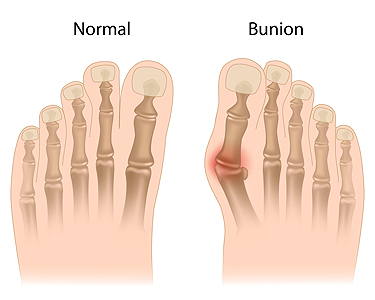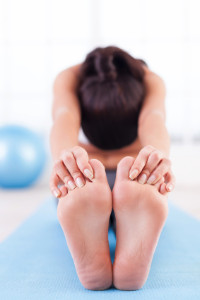Items filtered by date: August 2020
All About Ankle Pain
 Whether you’ve rolled your ankle while walking, endured a sprain, or experience symptoms in your joints, ankle pain is something that is worth monitoring. Pain in this area can be the result of inflammation or damage to the bones, joints, cartilage, ligaments, tendons, or muscles that make up the ankle. Ankle pain is often accompanied by other symptoms such as swelling, bruising, redness, numbness, tingling, instability, and a reduced ability to bear weight on the affected ankle. The most common cause of ankle pain is an injury, such as a sprain or Achilles tendonitis. Arthritic conditions such as rheumatoid arthritis, osteoarthritis, and gout tend to cause pain in the ankle joint as well. Nerve damage or neuropathy can cause lower limb pain and is especially common among diabetics. If you are experiencing ankle pain, it is strongly recommended that you seek the care of a podiatrist, who can diagnose and treat your condition.
Whether you’ve rolled your ankle while walking, endured a sprain, or experience symptoms in your joints, ankle pain is something that is worth monitoring. Pain in this area can be the result of inflammation or damage to the bones, joints, cartilage, ligaments, tendons, or muscles that make up the ankle. Ankle pain is often accompanied by other symptoms such as swelling, bruising, redness, numbness, tingling, instability, and a reduced ability to bear weight on the affected ankle. The most common cause of ankle pain is an injury, such as a sprain or Achilles tendonitis. Arthritic conditions such as rheumatoid arthritis, osteoarthritis, and gout tend to cause pain in the ankle joint as well. Nerve damage or neuropathy can cause lower limb pain and is especially common among diabetics. If you are experiencing ankle pain, it is strongly recommended that you seek the care of a podiatrist, who can diagnose and treat your condition.
Ankle pain can be caused by a number of problems and may be potentially serious. If you have ankle pain, consult with Donald Manger, DPM from Associated Podiatric Physicians, PA. Our doctor will assess your condition and provide you with quality foot and ankle treatment.
Ankle pain is any condition that causes pain in the ankle. Due to the fact that the ankle consists of tendons, muscles, bones, and ligaments, ankle pain can come from a number of different conditions.
Causes
The most common causes of ankle pain include:
- Types of arthritis (rheumatoid, osteoarthritis, and gout)
- Ankle sprains
- Broken ankles
- Achilles tendinitis
- Achilles tendon rupture
- Stress fractures
- Bursitis
- Tarsal tunnel syndrome
- Plantar fasciitis
Symptoms
Symptoms of ankle injury vary based upon the condition. Pain may include general pain and discomfort, swelling, aching, redness, bruising, burning or stabbing sensations, and/or loss of sensation.
Diagnosis
Due to the wide variety of potential causes of ankle pain, podiatrists will utilize a number of different methods to properly diagnose ankle pain. This can include asking for personal and family medical histories and of any recent injuries. Further diagnosis may include sensation tests, a physical examination, and potentially x-rays or other imaging tests.
Treatment
Just as the range of causes varies widely, so do treatments. Some more common treatments are rest, ice packs, keeping pressure off the foot, orthotics and braces, medication for inflammation and pain, and surgery.
If you have any questions, please feel free to contact our office located in Hamilton Township, NJ . We offer the newest diagnostic and treatment technologies for all your foot care needs.
Do Your Child's Feet Hurt?
Finding the Right Shoes for Your Child
 With how quickly children's feet tend to grow, shoe shopping for your little one can be a challenge. When purchasing shoes for your child, the first thing you will want to do is make sure that they are the right size! Children’s feet grow and change rapidly, so it is suggested that you take your child to the shoe store for a professional shoe fitting at least once per year rather than shopping online. A shoe store employee can also recommend shoe brands that will best fit your child’s feet specific to their needs. You will want to pick out shoes that are comfortable and supportive, and that leave wiggle room for their toes. For more information on finding proper-fitting shoes for your child, consult with a podiatrist.
With how quickly children's feet tend to grow, shoe shopping for your little one can be a challenge. When purchasing shoes for your child, the first thing you will want to do is make sure that they are the right size! Children’s feet grow and change rapidly, so it is suggested that you take your child to the shoe store for a professional shoe fitting at least once per year rather than shopping online. A shoe store employee can also recommend shoe brands that will best fit your child’s feet specific to their needs. You will want to pick out shoes that are comfortable and supportive, and that leave wiggle room for their toes. For more information on finding proper-fitting shoes for your child, consult with a podiatrist.
It is important to find shoes that fit you properly in order to avoid a variety of different foot problems. For more information about treatment, contact Donald Manger, DPM from Associated Podiatric Physicians, PA. Our doctor will treat your foot and ankle needs.
Proper Shoe Fitting
Shoes have many different functions. They cushion our body weight, protect our feet, and allow us to safely play sports. You should always make sure that the shoes you wear fit you properly in order to avoid injuries and deformities such as: bunions, corns, calluses, hammertoes, plantar fasciitis, stress fractures, and more. It is important to note that although a certain pair of shoes might be a great fit for someone else, that doesn’t mean they will be a great fit for you. This is why you should always try on shoes before buying them to make sure they are worth the investment. Typically, shoes need to be replaced ever six months to one year of regular use.
Tips for Proper Shoe Fitting
- Select a shoe that is shaped like your foot
- Don’t buy shoes that fit too tight, expecting them to stretch to fit
- Make sure there is enough space (3/8” to ½”) for your longest toe at the end of each shoe when you are standing up
- Walk in the shoes to make sure they fit and feel right
- Don’t select shoes by the size marked inside the shoe, but by how the shoe fits your foot
The shoes you buy should always feel as good as they look. Shoes that fit properly will last longer, feel better, and improve your way of life each day.
If you have any questions, please feel free to contact our office located in Hamilton Township, NJ . We offer the newest diagnostic and treatment technologies for all your foot care needs.
All About Bunions
 Bunions are a deformity of the toe joint that cause the big toe to move towards the other toes. The most common complaints of people with bunions are pain, a prominent bulge on the side of their foot, and difficulty wearing shoes. Bunions tend to get progressively worse over time, so it is important to seek medical care. A podiatrist diagnoses bunions by examining the foot, and may then take an X-ray to determine the severity of the condition. The doctor may recommend conservative care to manage the symptoms, or surgery to correct the deformity. If you suspect you have a bunion, it is recommended that you speak with a podiatrist who can diagnose and treat your condition.
Bunions are a deformity of the toe joint that cause the big toe to move towards the other toes. The most common complaints of people with bunions are pain, a prominent bulge on the side of their foot, and difficulty wearing shoes. Bunions tend to get progressively worse over time, so it is important to seek medical care. A podiatrist diagnoses bunions by examining the foot, and may then take an X-ray to determine the severity of the condition. The doctor may recommend conservative care to manage the symptoms, or surgery to correct the deformity. If you suspect you have a bunion, it is recommended that you speak with a podiatrist who can diagnose and treat your condition.
If you are suffering from bunions, contact Donald Manger, DPM of Associated Podiatric Physicians, PA. Our doctor can provide the care you need to keep you pain-free and on your feet.
What Is a Bunion?
A bunion is formed of swollen tissue or an enlargement of boney growth, usually located at the base joint of the toe that connects to the foot. The swelling occurs due to the bones in the big toe shifting inward, which impacts the other toes of the foot. This causes the area around the base of the big toe to become inflamed and painful.
Why Do Bunions Form?
Genetics – Susceptibility to bunions are often hereditary
Stress on the feet – Poorly fitted and uncomfortable footwear that places stress on feet, such as heels, can worsen existing bunions
How Are Bunions Diagnosed?
Doctors often perform two tests – blood tests and x-rays – when trying to diagnose bunions, especially in the early stages of development. Blood tests help determine if the foot pain is being caused by something else, such as arthritis, while x-rays provide a clear picture of your bone structure to your doctor.
How Are Bunions Treated?
- Refrain from wearing heels or similar shoes that cause discomfort
- Select wider shoes that can provide more comfort and reduce pain
- Anti-inflammatory and pain management drugs
- Orthotics or foot inserts
- Surgery
If you have any questions, please feel free to contact our office located in Hamilton Township, NJ . We offer the newest diagnostic and treatment technologies for all your foot care needs.
Stretching to Reduce Heel Pain
 Plantar fasciitis, a condition in which the plantar fascia ligament that runs along the bottom of your foot becomes inflamed, is one of the most common causes of heel pain among adults. Fortunately, something as simple as stretching your feet can help prevent plantar fasciitis, all while increasing the strength and flexibility of your feet. One easy stretch that you can do in the comfort of your own home is the Water Bottle Stretch. To do this stretch, sit down in a chair and place a water bottle, tennis ball, or rolling pin on the floor in front of you. Slowly roll the bottom of your foot over the object, starting from the ball of your foot and moving back towards the heel. Do this for about a minute, and then repeat on the other foot. If you are using a water bottle, you may also freeze it prior to doing this stretch. The cold water bottle will then simultaneously stretch and ice your foot, reducing pain and inflammation. For more information on how you can prevent plantar fascia injuries and for treatment options for plantar fasciitis, consult with a podiatrist today.
Plantar fasciitis, a condition in which the plantar fascia ligament that runs along the bottom of your foot becomes inflamed, is one of the most common causes of heel pain among adults. Fortunately, something as simple as stretching your feet can help prevent plantar fasciitis, all while increasing the strength and flexibility of your feet. One easy stretch that you can do in the comfort of your own home is the Water Bottle Stretch. To do this stretch, sit down in a chair and place a water bottle, tennis ball, or rolling pin on the floor in front of you. Slowly roll the bottom of your foot over the object, starting from the ball of your foot and moving back towards the heel. Do this for about a minute, and then repeat on the other foot. If you are using a water bottle, you may also freeze it prior to doing this stretch. The cold water bottle will then simultaneously stretch and ice your foot, reducing pain and inflammation. For more information on how you can prevent plantar fascia injuries and for treatment options for plantar fasciitis, consult with a podiatrist today.
Stretching the feet is a great way to prevent injuries. If you have any concerns with your feet consult with Donald Manger, DPM from Associated Podiatric Physicians, PA. Our doctor will assess your condition and provide you with quality foot and ankle treatment.
Stretching the Feet
Stretching the muscles in the foot is an important part in any physical activity. Feet that are tight can lead to less flexibility and make you more prone to injury. One of the most common forms of foot pain, plantar fasciitis, can be stretched out to help ease the pain. Stretching can not only ease pain from plantar fasciitis but also prevent it as well. However, it is important to see a podiatrist first if stretching is right for you. Podiatrists can also recommend other ways to stretch your feet. Once you know whether stretching is right for you, here are some excellent stretches you can do.
- Using a foam roller or any cylindrical object (a water bottle or soda can will do), roll the object under your foot back and forth. You should also exert pressure on the object. Be sure to do this to both feet for a minute. Do this exercise three times each.
- Similar to the previous one, take a ball, such as a tennis ball, and roll it under your foot while seated and exert pressure on it.
- Grab a resistance band or towel and take a seat. If you are using a towel, fold it length wise. Next put either one between the ball of your foot and heel and pull with both hands on each side towards you. Hold this for 15 seconds and then switch feet. Do this three times for each foot.
- Finally hold your big toe while crossing one leg over the other. Pull the toe towards you and hold for 15 seconds. Once again do this three times per foot.
It is best to go easy when first stretching your foot and work your way up. If your foot starts hurting, stop exercising and ice and rest the foot. It is advised to then see a podiatrist for help.
If you have any questions, please feel free to contact our office located in Hamilton Township, NJ . We offer the newest diagnostic and treatment technologies for all your foot care needs.
Do I Need Foot Surgery?
 Patients who consider having foot surgery performed have often exhausted other means of obtaining relief. It is considered to be a last resort for finding permanent relief, and many patients are willing to go through the recommended recovery time. One of the more common types of foot surgeries is having a bunion removed. A bunion is a bony protrusion that forms at the bottom of the big toe. It is often uncomfortable to wear shoes, and surgery may be a viable option for relief. A heel spur can form at the base of the heel and may develop as a result of enduring repetitive motion during running and jumping activities. This type of surgery is performed by reducing the inflammation of the plantar fascia. The plantar fascia is the band of tissue that connects the heel to the toes, and pain in the plantar fascia may be indicative of a heel spur. If you have a foot condition that may require surgery, it is strongly suggested that you consult with a podiatrist who can determine if this is the right choice for you.
Patients who consider having foot surgery performed have often exhausted other means of obtaining relief. It is considered to be a last resort for finding permanent relief, and many patients are willing to go through the recommended recovery time. One of the more common types of foot surgeries is having a bunion removed. A bunion is a bony protrusion that forms at the bottom of the big toe. It is often uncomfortable to wear shoes, and surgery may be a viable option for relief. A heel spur can form at the base of the heel and may develop as a result of enduring repetitive motion during running and jumping activities. This type of surgery is performed by reducing the inflammation of the plantar fascia. The plantar fascia is the band of tissue that connects the heel to the toes, and pain in the plantar fascia may be indicative of a heel spur. If you have a foot condition that may require surgery, it is strongly suggested that you consult with a podiatrist who can determine if this is the right choice for you.
Foot surgery is sometimes necessary to treat a foot ailment. To learn more, contact Donald Manger, DPM of Associated Podiatric Physicians, PA. Our doctor will assist you with all of your foot and ankle needs.
When Is Surgery Necessary?
Foot and ankle surgery is generally reserved for cases in which less invasive, conservative procedures have failed to alleviate the problem. Some of the cases in which surgery may be necessary include:
- Removing foot deformities like bunions and bone spurs
- Severe arthritis that has caused bone issues
- Cosmetic reconstruction
What Types of Surgery Are There?
The type of surgery you receive will depend on the nature of the problem you have. Some of the possible surgeries include:
- Bunionectomy for painful bunions
- Surgical fusion for realignment of bones
- Neuropathy decompression surgery to treat nerve damage
Benefits of Surgery
Although surgery is usually a last resort, it can provide more complete pain relief compared to non-surgical methods and may allow you to finally resume full activity.
Surgical techniques have also become increasingly sophisticated. Techniques like endoscopic surgery allow for smaller incisions and faster recovery times.
If you have any questions please feel free to contact our office located in Hamilton Township, NJ . We offer the newest diagnostic and treatment technologies for all your foot and ankle needs.

